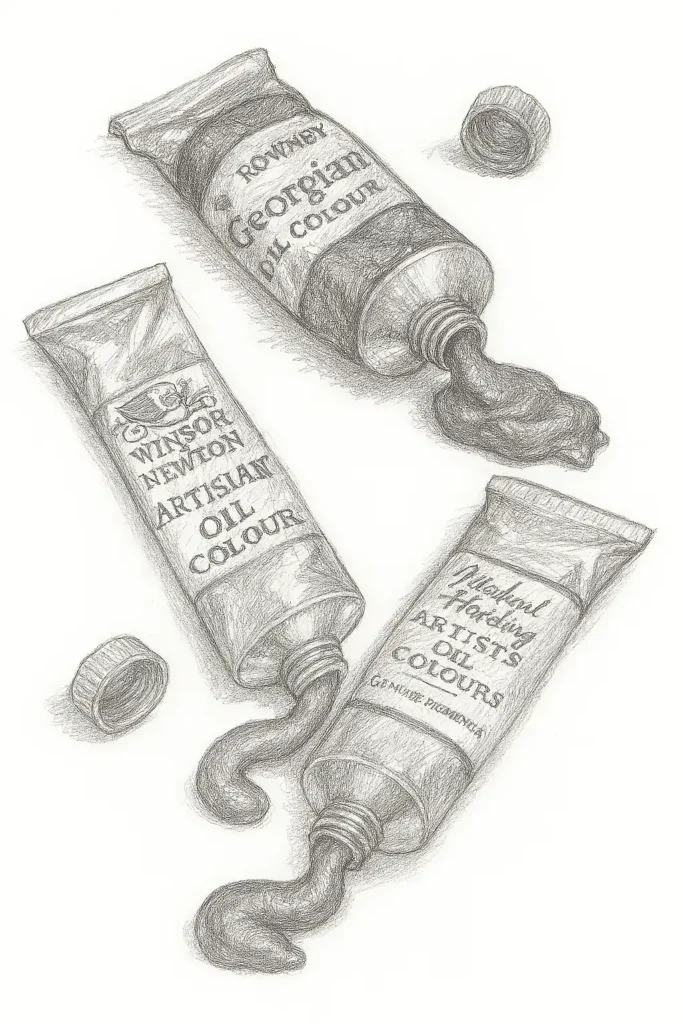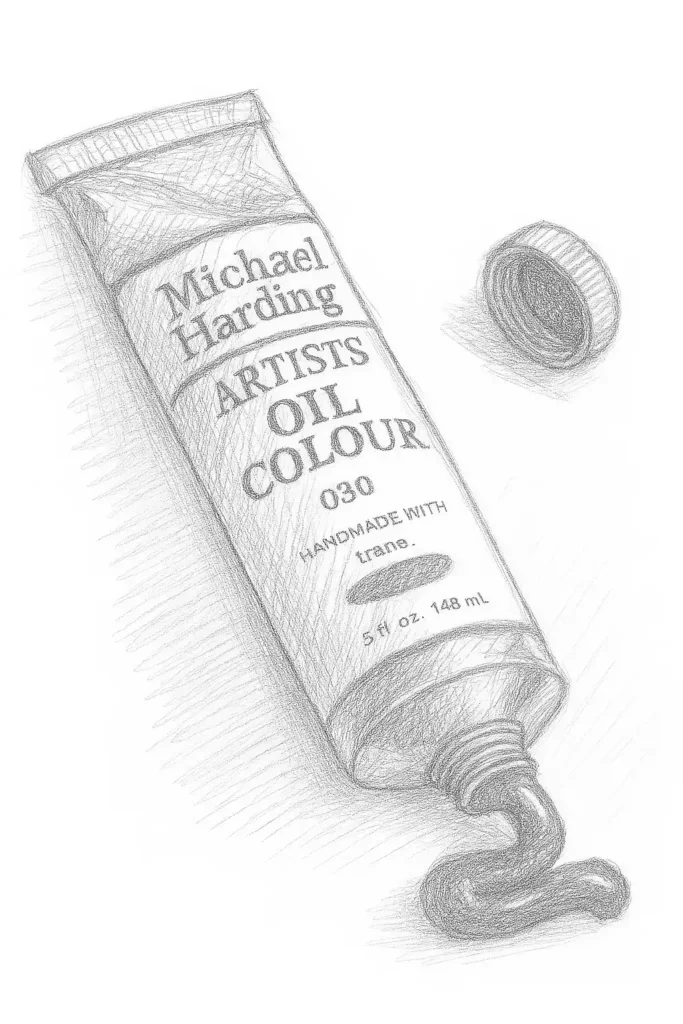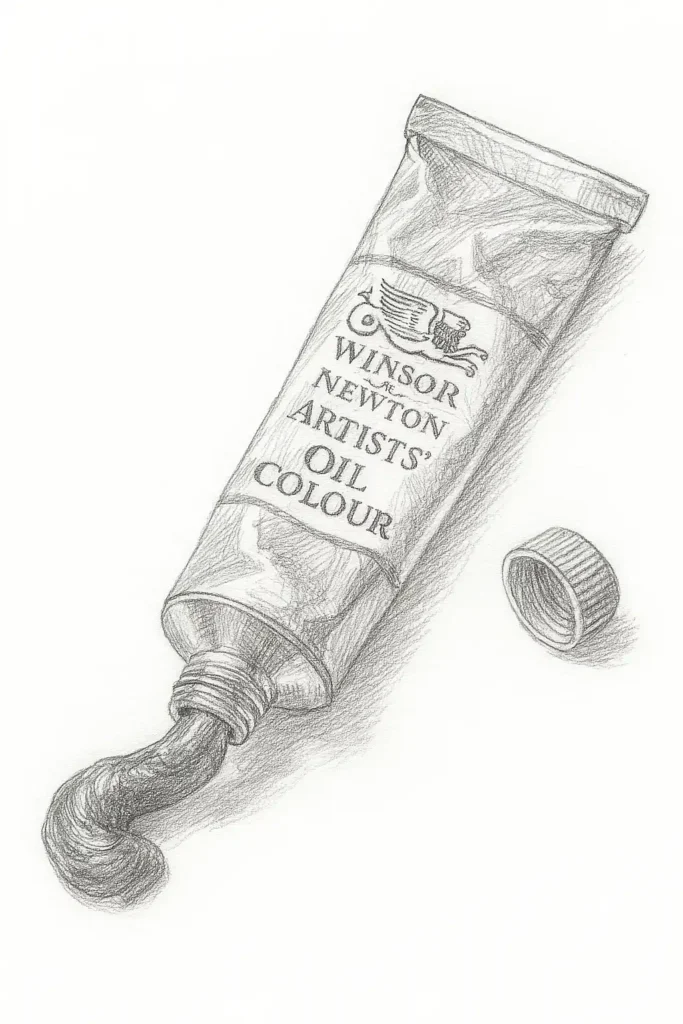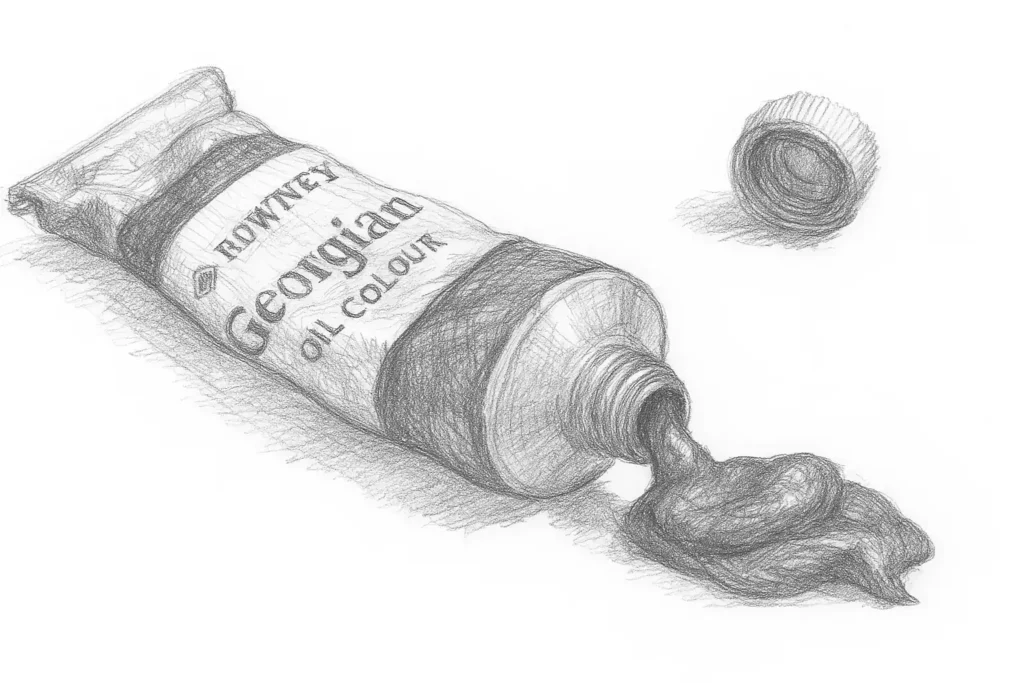1. What’s the difference between student-grade and professional-grade oil paints?
Student-grade paints are cheaper and easier to use but have lower pigment concentration. Professional paints, like Michael Harding or Gamblin, offer richer colour and longer-lasting lightfastness.
2. Which brands make the best oil paints in the UK?
Winsor & Newton, Gamblin, Michael Harding, and Schmincke Mussini are top brands known for quality and reliability.
3. How many colours do I need in a set?
A basic set of 12 colours covers most painting needs. Professionals often expand to 24–48 colours for more precise mixing and special pigments.
4. Which brushes work best?
Use hog bristle or synthetic brushes designed for oils. Round, filbert, and flat shapes are versatile for most techniques.
5. Are oil paints suitable for beginners?
Yes, but beginners may start with student-grade sets to learn mixing and layering without investing heavily.
6. How do I store oil paints?
Keep in a cool, dry place, away from direct sunlight. Ensure tube caps are tightly closed to prevent drying.
7. How long do oil paints last?
Professional oil paints can last decades if stored properly. Tubes may last many years without losing pigment quality.
8. Do oil paints dry quickly or slowly?
Oil paints dry slowly, allowing extended blending time. Drying time varies by pigment and medium.
9. What mediums and solvents are needed?
Common mediums: linseed oil, stand oil, or walnut oil. Solvents: turpentine or odorless mineral spirits for cleaning brushes.
10. Can I use oil paints on any surface?
Best surfaces: primed canvas, oil paper, or boards. Avoid unprimed wood or paper unless sealed.




